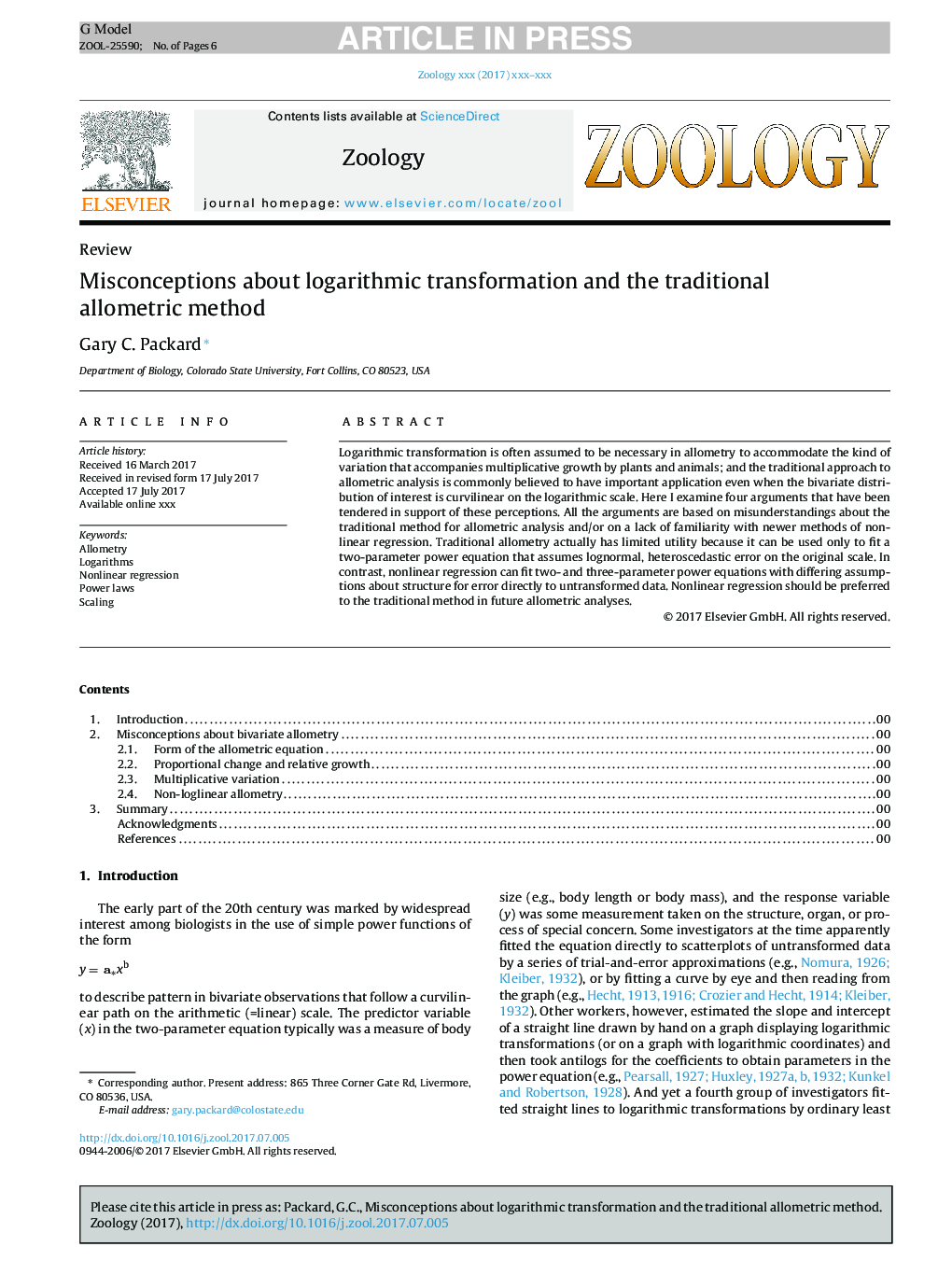| Article ID | Journal | Published Year | Pages | File Type |
|---|---|---|---|---|
| 5586518 | Zoology | 2017 | 6 Pages |
Abstract
Logarithmic transformation is often assumed to be necessary in allometry to accommodate the kind of variation that accompanies multiplicative growth by plants and animals; and the traditional approach to allometric analysis is commonly believed to have important application even when the bivariate distribution of interest is curvilinear on the logarithmic scale. Here I examine four arguments that have been tendered in support of these perceptions. All the arguments are based on misunderstandings about the traditional method for allometric analysis and/or on a lack of familiarity with newer methods of nonlinear regression. Traditional allometry actually has limited utility because it can be used only to fit a two-parameter power equation that assumes lognormal, heteroscedastic error on the original scale. In contrast, nonlinear regression can fit two- and three-parameter power equations with differing assumptions about structure for error directly to untransformed data. Nonlinear regression should be preferred to the traditional method in future allometric analyses.
Related Topics
Life Sciences
Agricultural and Biological Sciences
Animal Science and Zoology
Authors
Gary C. Packard,
